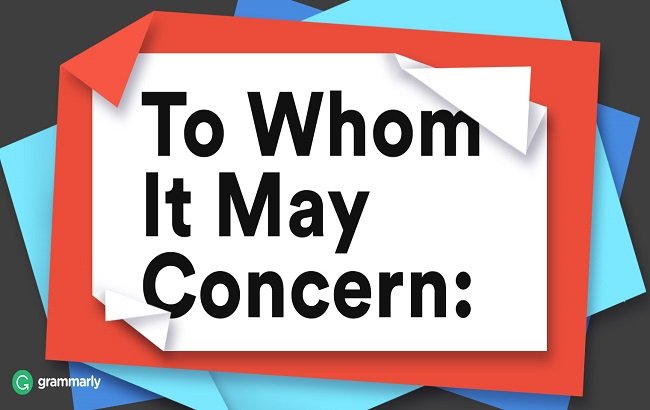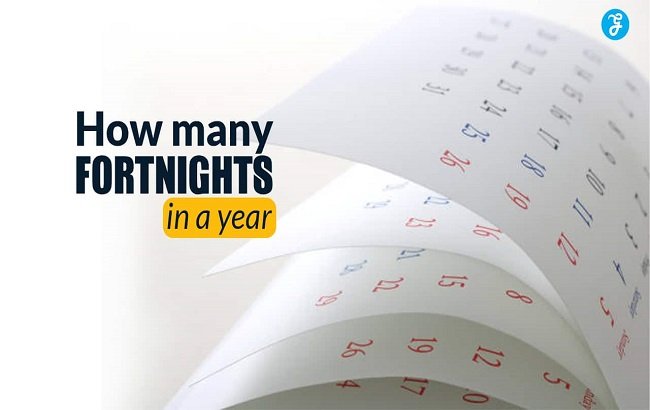When you’re writing a formal letter, report, or email, one phrase that often appears is To Whom It May Concern. Whether you’re addressing a company, a department, or an unknown recipient, this phrase serves as a neutral and professional opening. While useful, it’s important to know how and when to use it effectively. In this article, I’ll guide you through five essential tips on how to use To Whom It May Concern properly, the challenges you might face, and how to overcome them.
Table of Contents
Toggle1. Understanding the Purpose of To Whom It May Concern
The first step to using “To Whom It May Concern” is understanding why it’s used in the first place. This phrase serves as a formal salutation, primarily used when the name of the recipient is unknown or when you’re writing to a general audience, such as a department or organization.
Why Use “To Whom It May Concern”?
- Professionalism: This phrase adds a level of formality to your communication. It’s especially useful when sending inquiries, job applications, or formal requests.
- Neutral: Since you don’t know the recipient’s name, this neutral greeting keeps the tone respectful without making assumptions.
For example, if you’re sending a cover letter to a company and you don’t know the name of the hiring manager, “To Whom It May Concern” is a perfectly suitable option. However, in a world of personalized communication, it’s important to know when to use it and when to opt for a more specific approach.
Challenges with “To Whom It May Concern”
Although it has its merits, there are some downsides to using this salutation:
- Generic Feel: “To Whom It May Concern” can sound impersonal and may give the impression that you didn’t take the time to research the recipient.
- Dated Approach: With more modern communication tools and resources, some people find this phrase outdated and prefer addressing a specific person or team.
2. 5 Key Tips to Effectively Use To Whom It May Concern
Here are five essential tips that will help you use “To Whom It May Concern” effectively, ensuring that your communication is still professional and engaging.
Tip #1: Use It Sparingly and Only When Necessary
While “To Whom It May Concern” is a reliable option, it shouldn’t be your go-to greeting in every letter. If you can, try to find out the specific name or title of the recipient. A personal greeting will always have more impact than a generic one.
How to Find the Right Person:
- Visit the Company Website: Many organizations list key staff members, especially for larger companies or institutions.
- Call the Company: If you’re unsure, it’s always worth calling the company and asking for the contact person or department.
- Look at Job Listings: If you’re applying for a job, job listings often include the name or title of the hiring manager.
Using “To Whom It May Concern” should only be a fallback when all other options have been exhausted.
Tip #2: Keep Your Letter Professional and Clear
Once you’ve decided to use “To Whom It May Concern”, make sure the rest of your letter reflects the same level of professionalism. Be direct about your purpose for writing, and avoid overly casual language. Clear communication is key to achieving a positive response.
Example:
- “To Whom It May Concern, I am writing to inquire about your recent product launch. Could you please provide more details regarding its features and availability?”
This sentence opens the conversation in a direct yet respectful way. Always remember, your main goal is to make your point without being too vague or overly wordy.
Tip #3: Don’t Overuse It in Modern Communication
In today’s fast-paced, digital world, emails are often the primary form of professional communication. When you use “To Whom It May Concern”, it can make your email feel more impersonal and detached. If you know the department or the recipient’s position, it’s better to use a more specific salutation.
Examples of Specific Salutations:
- “Dear Hiring Manager” – for job applications.
- “Dear Customer Support” – for inquiries or complaints.
- “Dear [Department Name]” – for addressing a department like “Dear Marketing Team.”
Specific greetings show you’ve done your research and are addressing the right person or department. This increases your chances of a more timely and focused response.
Tip #4: Use To Whom It May Concern for Formal Requests
This phrase is most effective in formal settings, especially when you’re addressing organizations rather than individuals. You might use it when you’re making inquiries or submitting formal requests, such as for a job application or reference request.
Examples of Formal Use:
- Job Applications: If you don’t know who will be reading your application, you might use “To Whom It May Concern” in your cover letter.
- Business Inquiries: If you are asking for information or services from a company, this phrase can be useful.
- Reference Letters: When recommending someone to an organization and you don’t know who will review the letter, “To Whom It May Concern” can be appropriate.
While you should try to personalize your communication, formal requests are one area where “To Whom It May Concern” remains effective.
Tip #5: Always Close with a Professional Sign-Off
Once you’ve used “To Whom It May Concern”, don’t forget to close your letter appropriately. A proper sign-off can leave a lasting impression.
Examples of Professional Closures:
- “Sincerely”
- “Best regards”
- “Yours faithfully”
Closing your letter properly adds credibility and professionalism, ensuring that the reader takes your communication seriously.
3. Common Pitfalls When Using To Whom It May Concern
Even with the best of intentions, it’s easy to make mistakes when using “To Whom It May Concern”. Below are a few pitfalls to watch out for.
1. Overusing It
As mentioned earlier, “To Whom It May Concern” can become a crutch if overused. If you find yourself using it in every letter, it may be time to reassess your approach. Try to research the recipient whenever possible and use a more specific salutation.
2. Not Tailoring the Content
While “To Whom It May Concern” is a general greeting, your letter should still be tailored to the specific subject matter or purpose. Avoid using overly generic language in your content, as this can make your letter seem lazy or insincere.
3. Addressing the Wrong Department
One of the biggest mistakes you can make is directing your communication to the wrong department. For example, if you’re applying for a job, ensure your cover letter reaches the correct HR department, not a random one. If you don’t know the department, it’s better to call the organization and ask for clarification.
4. How To Whom It May Concern Affects Your Communication
Your choice of salutation can have a significant impact on how your letter is received. Let’s take a closer look at how “To Whom It May Concern” affects your communication.
Advantages:
- Maintains Professionalism: This phrase keeps the tone formal and respectful.
- Neutral: It works well when you don’t know the recipient’s identity, avoiding any assumptions.
Disadvantages:
- Feels Impersonal: It can come off as distant and detached.
- May Be Overlooked: Letters using this phrase can sometimes be overlooked, as they don’t create a strong, personalized connection.
5. Alternatives to To Whom It May Concern
If you’re looking to make your letter more personal and engaging, here are some alternative greetings you can use instead of “To Whom It May Concern”:
- “Dear Hiring Manager” – when applying for jobs.
- “Dear Customer Service” – for customer inquiries.
- “Dear [Department Name]” – when writing to a specific department, e.g., “Dear Accounts Team.”
These alternatives are more targeted and show that you’ve taken the time to tailor your communication, which can increase your chances of receiving a prompt and relevant response.
6. Conclusion: Making To Whom It May Concern Work for You
While To Whom It May Concern may seem like a simple and straightforward greeting, its effectiveness depends on how and when it’s used. By following the tips in this article, you can ensure that your communication remains professional and respectful while avoiding the pitfalls that come with using a generic salutation.
When possible, take the time to research the recipient and use a more personalized greeting. However, in situations where you can’t identify the person, To Whom It May Concern remains a reliable option. Remember, the key is to use it sparingly and with clear, concise content to ensure your message is received in the best possible light.
FAQs About “To Whom It May Concern”
Q1: Is “To Whom It May Concern” still relevant today?
Yes, it remains relevant but is best used in formal letters when no better options are available.
Q2: When should I use “To Whom It May Concern”?
Use it when you don’t know the recipient’s name or title, such as in inquiries or job applications.
Q3: Can “To Whom It May Concern” be used in emails?
Yes, but emails tend to benefit from more direct and personalized greetings.
Q4: Are there alternatives to “To Whom It May Concern”?
Yes, alternatives like “Dear Hiring Manager” or “Dear Customer Service” are more personal and effective.
Q5: How can I find the correct person to address a letter?
Check the company website, call the organization, or refer to job listings to identify the right contact.
If you need more guidance on crafting formal letters or understanding effective communication strategies, be sure to check out Traceloans for more tips.
You May Also Like:


